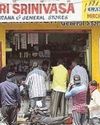
MACROSCAN
At the recent G20 and IMF-WB Spring meetings held virtually in the third week of April 2020, a proposal for the IMF to issue an additional 500 billion of Special Drawing Rights (SDRs) was blocked by the US and — astonishingly — India. In the wake of the COVID-19 pandemic and the unprecedented collapse of global economic activity, there had been many calls for the IMF to issue at least one trillion SDRs.
This would be particularly important for all developing countries, since they are currently facing the brunt of the collapse in world trade and tourism as well as sharp reversals in capital flows, which have caused their currencies to depreciate and led to serious problems in servicing their external debts.
In this context, the proposal for the immediate issue of 500 billion SDRs may seem to be inadequate, but it would still have been a significant increase in global liquidity, because the global “flight to safety” in financial markets has given rise to dollar shortage. At the moment, the resultant demand for dollars is being met for a few countries by US Federal Reserve swap lines.
Dollar demand
What’s the difference? The Fed’s swap arrangements are aimed at providing central banks in partner countries access to dollars to meet demands in their jurisdictions. Since October 31, 2013, temporary swap agreements with a selected few central banks — the Bank of Canada, the Bank of England, the Bank of Japan, the European Central Bank, and the Swiss National Bank — were converted into standing arrangements that are open-ended, both in terms of amount and time period; but these have been significantly used in the recent period.
This story is from the {{IssueName}} edition of {{MagazineName}}.
Start your 7-day Magzter GOLD free trial to access thousands of curated premium stories, and 9,000+ magazines and newspapers.
Already a subscriber ? Sign In
This story is from the {{IssueName}} edition of {{MagazineName}}.
Start your 7-day Magzter GOLD free trial to access thousands of curated premium stories, and 9,000+ magazines and newspapers.
Already a subscriber? Sign In

Covid Presents An Opportunity For India
India must attract investors exiting China post-Covid. Streamlining of project clearances and relaxation in FRBM norms will help

Did Alternative Assets Shield You From Covid-19 Volatility?
The assets closely linked to stock and debt markets could not stave off the losses

How To Put Aircraft To Bed
Preserving grounded planes, to get them up and flying at short notice, is a challenging task. Ashwini Phadnis captures the process

There Can Be No Going Back On WFH
Covid-19 has fast-forwarded the shift to ‘work from home’. However, some face-to-face connect will always be needed

UN, WHO Urged To Ensure ‘Benefit Sharing' Of Covid-Related Data
Biopharma firms should reach vaccines, medicines to poor nations at an affordable price, say civil society bodies

With No Clear Signal From Rlys, States Explore Ways To Bring Back Migrants
Quarantine centres, cross-country buses being arranged even as migrants hop on to boats, trucks and ambulances

Centre Allows All Neighbourhood Shops To Open But With Riders
Final call will be taken by local authorities; shopping complexes that draw fewer ‘outsiders’ are permitted to operate

Covid Impact Relatively Muted In India
Compared to Italy and the US, India’s rate of infection spread has been slow. This can be attributed to the strict measures in place

How Global Trade Will Fare Post-Covid
China isn’t likely to lose its pre-eminent position soon. India, for one, will need to make manufacturing globally competitive

How To Curb Harassment In The Virtual Office
Training and sensitisation are essential. Institute a strict dress code and chat etiquette to ensure professionalism during video calls